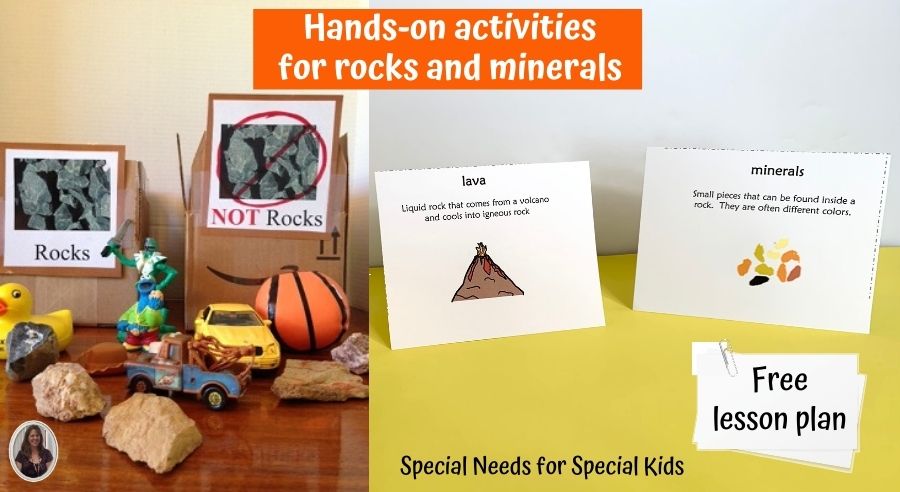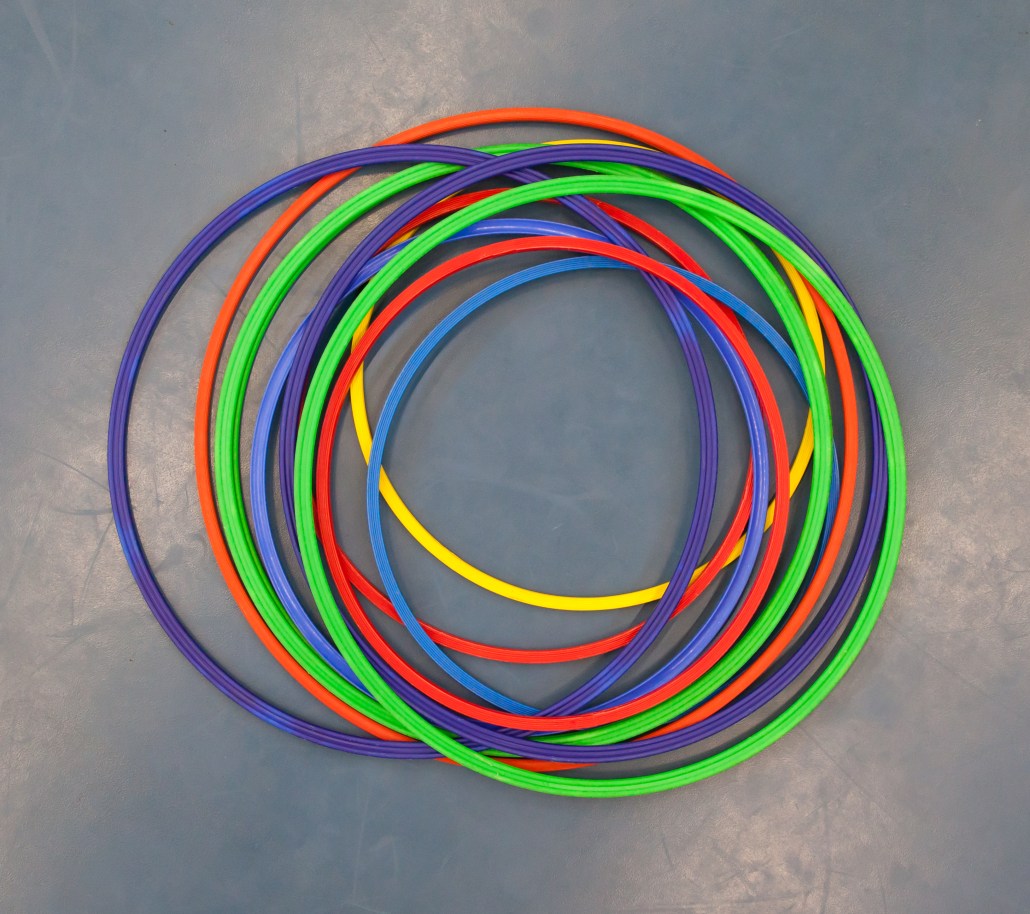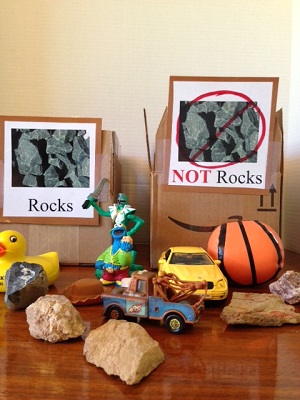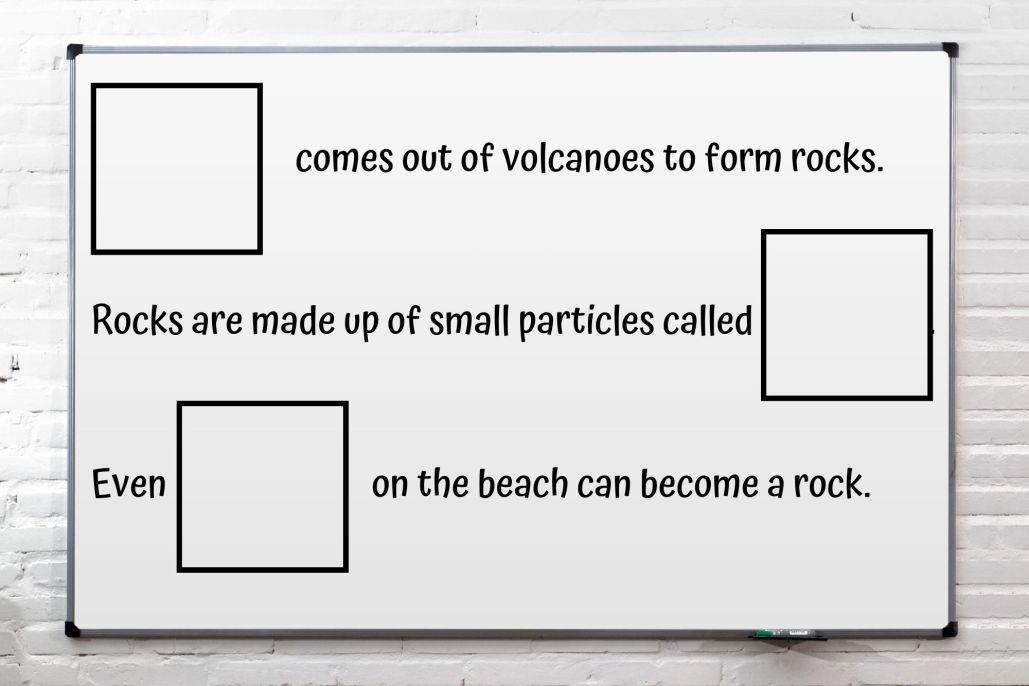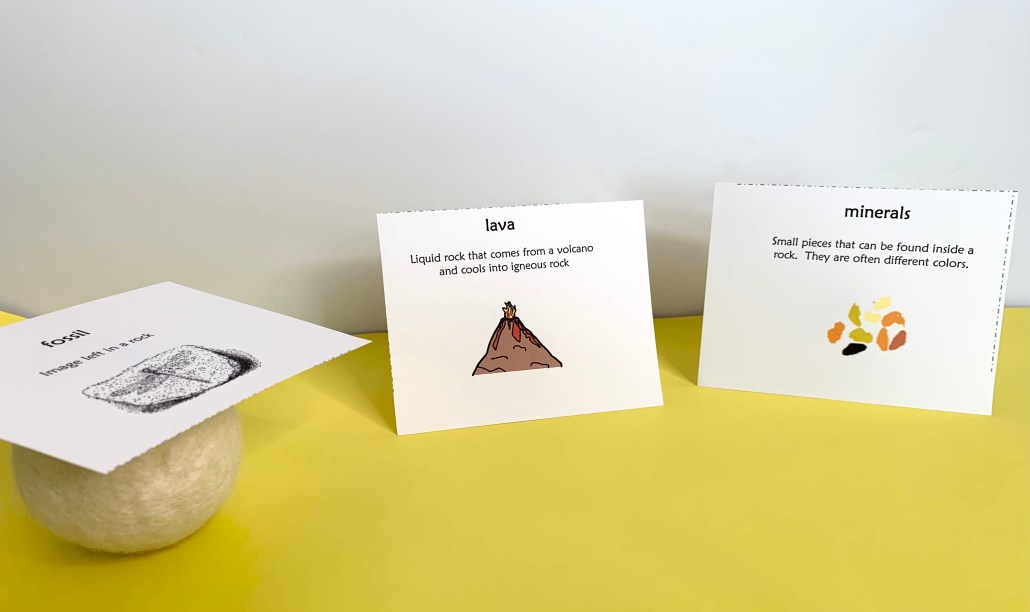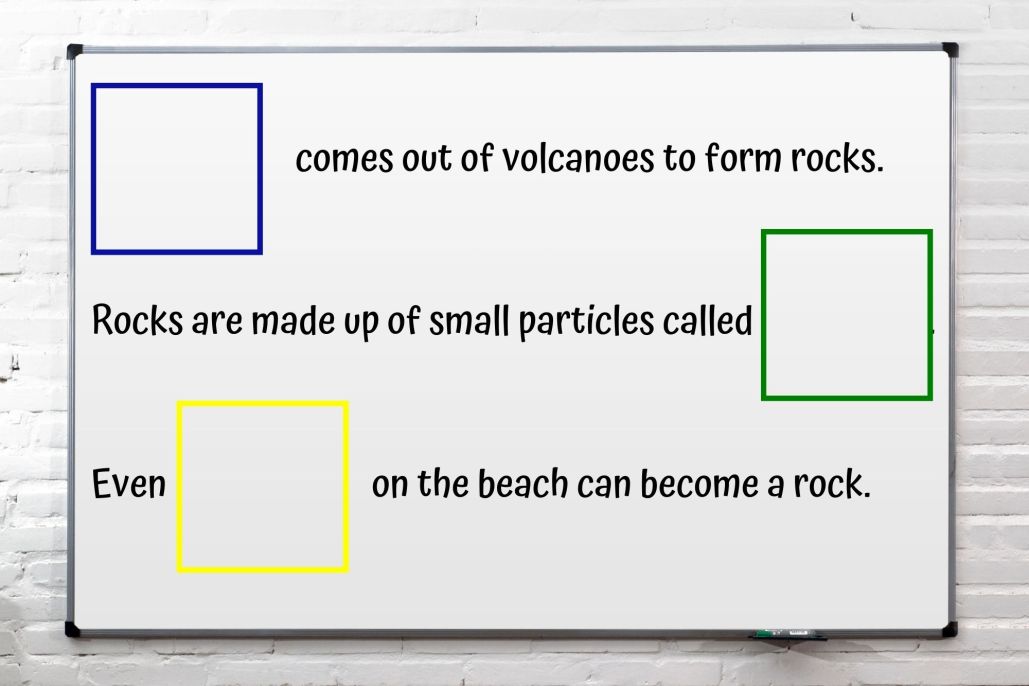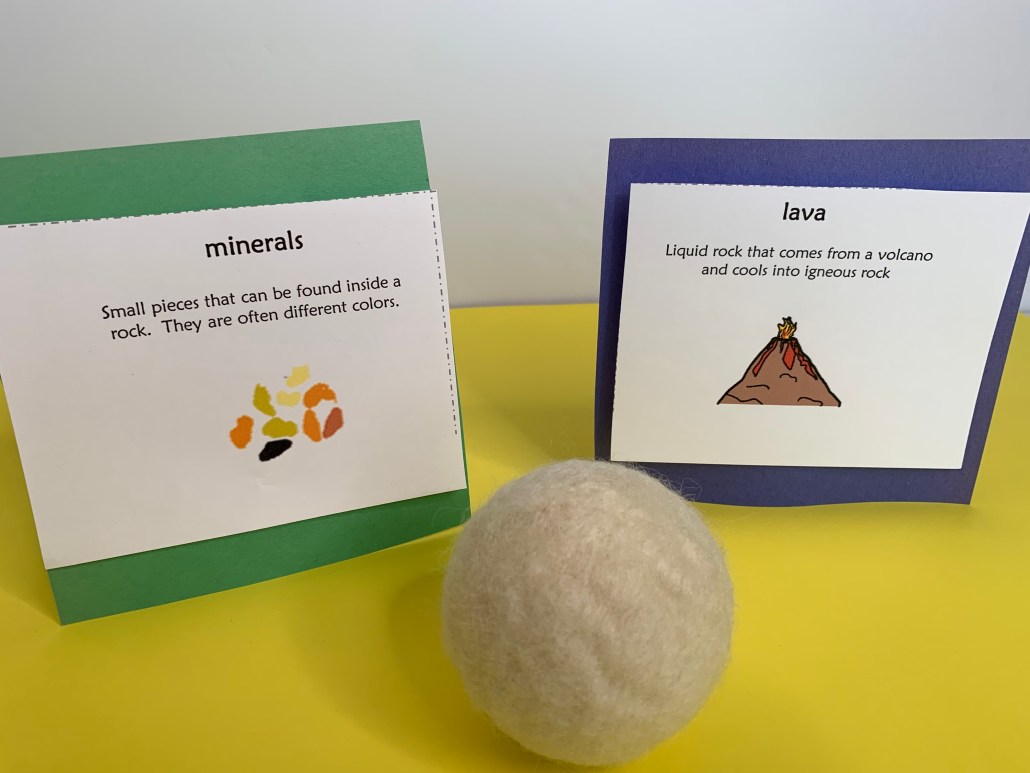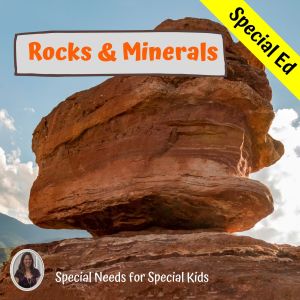Looking for some different activities for rocks and minerals? Are you tired of using the same worksheets and assessments? If you need some engaging, hands-on activities for teaching about rocks and minerals in a special education classroom, then read on!! And be sure to grab the free lesson plan at the end of the post.
Most of the activities for rocks and minerals you will find in your google and Pinterest searches will involve a worksheet of some sort. And, full disclosure, I have a complete unit on rocks and minerals that is heavily worksheet-based. But, I also know there were many years I had students in my class who could not do or learn from a worksheet. So, here are some activities for rocks and minerals I came up with and worked really well.
Vocabulary
Many times when you are introducing a new unit, it comes with a whole bunch of new vocabulary words. While vocabulary cards and puzzles are great for some students, they need serious modifications for others.
Here are some common vocabulary words you may use when teaching about rocks and minerals:
- minerals
- fossil
- sediment
- lava
- igneous
- sedimentary
- metamorphic
The first thing to do is to try and find an object that you can associate with the vocabulary words you want your students to become familiar with by the end of the unit. This is not always easy, and sometimes I had to get really creative!
| minerals | sunflower seeds or fruity pebbles cereal (if you can still find it) |
| fossil | dried play-do with an impression |
| sediment | baggie of sand or dirt |
| lava | slime |
| igneous | sponge |
| sedimentary | any common rock you find outside |
| metamorphic | marble (although marbles are glass, real marble is a metamorphic rock) |
I also have some fun hands-on activities you can do with new vocabulary words like a scavenger hunt and bean bag toss. These are referenced in the lesson plan, but you can also check them out at my blog post Awesome Activities to do with Vocabulary Boards.
Graphic Organizers
Circle maps are a great activities for rocks and minerals. And, they do not need to be done on paper. I used a hula hoop that we either laid on the floor or taped to the dry erase board.
There were two different activities for rocks and minerals I did with the hula hoops. First, students would have a box or objects. Some of the objects were rocks and some were not. Those that were rocks went into the hula hoop. For my most affected students, I only included rocks in the box. There job was to put each object from the box into the hula hoop.
The second way I would use it was to identify characteristics of rocks and minerals. This is where the objects I had chosen for my vocabulary came in. I typically made this an errorless task. We would take the objects that represented our rocks and minerals vocabulary and place them in the circle. That way, we were making a picture of what rocks and minerals were like.
For both of these, I would take a picture with my phone of the finished product that I could print out and share with the students later.
Sorting activities for rocks and minerals
This activity was somewhat similar to the circle map with the hula hoop above. Students would practice sorting objects that were and were not rocks or sort various characteristics of rocks.
One fun addition to this activity we did was to sort into buckets of water. The kids loved the sound and feel of dropping rocks into the bucket. That increased level of engagement helped to eliminate some of the problem behaviors that could sometimes occur.
Fill in the blank
Yes, you can actually make a fill in the blank worksheet into a physical task as well. Here is how I did it (while my higher students were doing the cut and paste worksheet).
I wrote the sentence from the worksheet on the whiteboard with a big square where the missing word would be. None of my students who were doing this activity could read, but that was okay. First, it helped them recognize the format from previous units where we had done this same activity. Second, it helped my paras who might be doing this activity with them instead of me.
I would pass out tennis balls with large picture symbols velcroed or taped to them. Then, I would read the sentence out loud and see if the person who was holding the correct answer would recognize that and bring it up to the board. Then, I could easily remove the card and place it in the empty box.
If you have students who really struggle with this, then add some color coding. Outline or color in the empty boxes different colors. Then, use corresponding construction paper to mount the answers on. This is a great way to build some independence and have students practice the routine without having to stress about knowing the content.
One last thing about this activity. Make sure to take the time and go back and read each sentence. If you have students who use communication devices, this is a great opportunity for them to participate. Quickly record a sentence they can say using their device. This was probably one of the most popular activities for rocks and minerals that we did, reading the sentences out loud for themselves.
Assessments
Luckily, all of my assessment comes with an option of large answer cards you can print out and use for student responses. These are great if you have students who need less distraction or even have to use an eye gaze frame.
You read the question aloud and give them 2-3 answer choices. Of course, you can also use objects for this step as well.
One last word of caution when doing hands-on activities for rocks and minerals
Sometimes you have students who may have a tendency to throw things. If this is the case, then you obviously do not want to be handing out real rocks for them to use. This is where we just need to get creative and find appropriate substitutes. Do not underestimate your students’ ability to generalize from a sponge to igneous rock. With enough repetition and purposeful practice, this will become a natural transition.
Grab your free lesson plan: activities for rocks and minerals
If you are wanting to see how I structure these activities and more into a 6 day unit, then download the lesson plan by clicking the button below. Although it does not include the experiments from the unit itself, I bet you could ask a fellow teacher for a suggestion (or purchase the unit and get everything you need.)
Check out my complete units for rocks and minerals. I have one that is in a print-only version and one that includes digital activities as well for those doing remote teaching.
